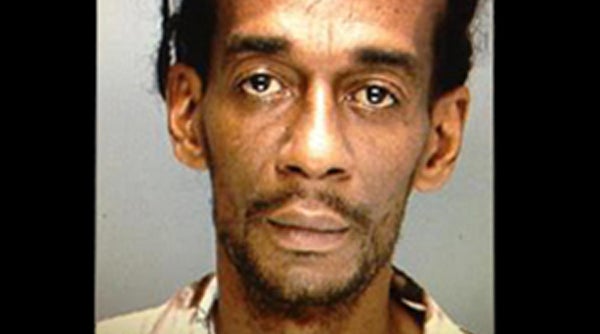Crane operator, Sean Benschop, turns himself in to police

Crane operator, Sean Benschop, turns himself in to police (Photo courtesy of the Philadelphia Police Department)
Police say a heavy equipment operator who is accused of being high on marijuana when a downtown building collapsed onto a thrift store, killing six people, is in custody after surrendering to face charges in the deaths.
Authorities say Sean Benschop, who has a lengthy police record, surrendered Saturday. He faces six counts of involuntary manslaughter, 13 counts of recklessly endangering another person and one count of risking a catastrophe. A warrant had been issued for his arrest and police had been searching for him.
Authorities believe the 42-year-old Benschop had been using an excavator Wednesday when the remains of the four-story building under demolition gave way and toppled onto an attached Salvation Army thrift store, killing two employees and four customers and injuring 13 others.
Benschop’s attorney, Daine Grey, says Benschop and his family “are extremely sympathetic and remorseful.” But, he says, in time, the facts will show that Benschop is not responsible.
Mayor Michael Nutter issued a statement after Benschop turned himself in:
“Our hearts are still hurting over the loss of those six good people, working or shopping at the Salvation Army Thrift Store, trying to ‘do good’. We continue to pray for the physical and mental recovery of the thirteen survivors.
“It is my hope that the harshest level of charges are brought against Sean Benschop and he is punished accordingly. We must also seek answers from property owners Richard Basciano and Griffin T. Campbell who hired Benschop to do the significant job of operating heavy equipment. These three individuals bear the ultimate and sole responsibility for this tragedy.
“Justice will only be served if Sean Benschop receives a sentence that buries him in a jailhouse forever, just like his victims were buried on Wednesday.
“Let us keep all the families affected by this horrific event in our thoughts and prayers, and never forget what happened that day.”
The collapse has brought swift and mounting fallout in a city where demolition contractors are lightly regulated. Officials have begun inspecting hundreds of demolition sites citywide, and a city councilman charged that dangerous, under-the-radar tear-downs are taking place throughout Philadelphia.
Councilman James Kenney, among others, called for a review of the demolition application and inspection process and demanded a stricter process for demolition companies.
“This is happening all over the city,” he said. “I need to know who the workers are who are there, what they know, what they don’t know, how they’ve been trained.”
The city does check the condition of buildings to be torn down before demolition can begin — and inspects them again after the tear-down is finished — but does not require an inspection during demolition. A pre-demolition inspection at the site on May 14 turned up no issues, said Carlton Williams, head of the city’s Department of Licenses and Inspections.
Pennsylvania does not license demolition contractors, nor does the city. Williams said the city code does not require demolition contractors to show any proficiency in tearing down buildings.
“Buildings get demolished all the time in the city of Philadelphia with active buildings right next to them. … They’re done safely in this city all the time,” Nutter said Thursday. “Something obviously went wrong here yesterday and possibly in the days leading up to it. That’s what the investigation is for.”
Nutter said he was unaware of any complaints about the demolition work done by Campbell in the days before the tragedy. But the U.S. Occupational Safety and Health Administration said it had gotten a complaint May 15 that workers at the site were at risk of falling. The complaint was still open at the time of the disaster, U.S. Labor Department spokeswoman Leni Uddyback-Fortson said.
OSHA regulates the demolition industry and enforces standards meant to ensure worker safety. Among other things, its regulations forbid any wall section exceeding one story to stand alone without bracing, unless the wall was designed that way. Witnesses have said they saw a 30-foot section of unbraced wall before the collapse.
A video of the demolition taken the Sunday before the collapse showed bricks raining down on the sidewalk as a worker used a backhoe and claw to remove a second-story front wall.
The sidewalk and the staircase leading up from a subway stop appeared open to pedestrians despite the falling bricks. Cars and trucks could also be seen going past, just a few feet away.
Associated Press writers Kathy Matheson, Maryclaire Dale, Michael Rubinkam, JoAnn Loviglio, Kevin Begos and Keith Collins contributed to this report, along with AP’s News and Information Research Center.
WHYY is your source for fact-based, in-depth journalism and information. As a nonprofit organization, we rely on financial support from readers like you. Please give today.

